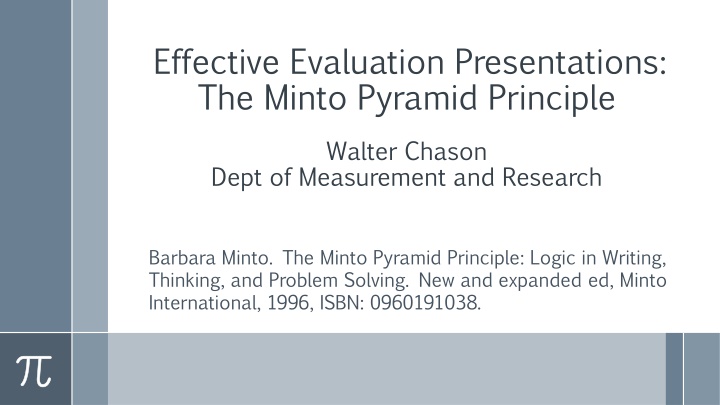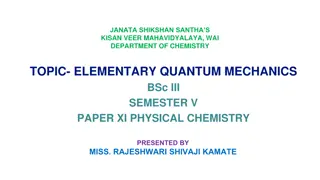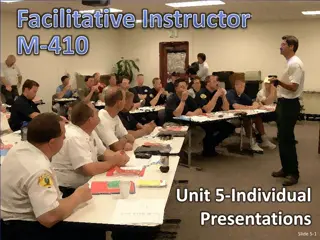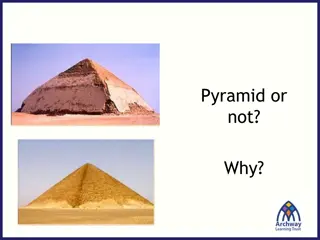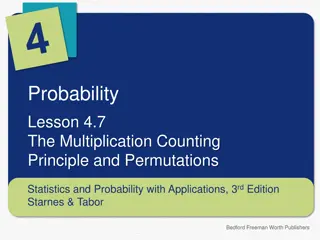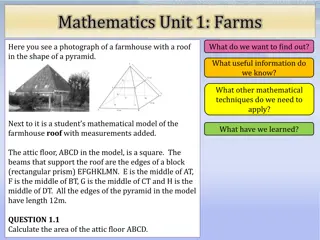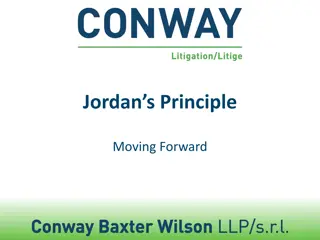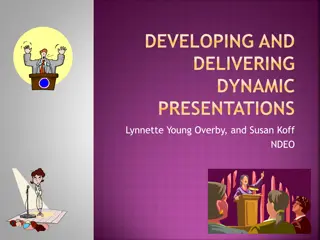Mastering Effective Evaluation Presentations with the Minto Pyramid Principle
Learn how to structure your evaluation presentations using the SCQA framework, logical arguments, supporting data, and clear introductions. The Minto Pyramid Principle provides a systematic approach to writing and thinking, ensuring your message is compelling and well-structured.
Download Presentation

Please find below an Image/Link to download the presentation.
The content on the website is provided AS IS for your information and personal use only. It may not be sold, licensed, or shared on other websites without obtaining consent from the author.If you encounter any issues during the download, it is possible that the publisher has removed the file from their server.
You are allowed to download the files provided on this website for personal or commercial use, subject to the condition that they are used lawfully. All files are the property of their respective owners.
The content on the website is provided AS IS for your information and personal use only. It may not be sold, licensed, or shared on other websites without obtaining consent from the author.
E N D
Presentation Transcript
Effective Evaluation Presentations: The Minto Pyramid Principle Walter Chason Dept of Measurement and Research Barbara Minto. The Minto Pyramid Principle: Logic in Writing, Thinking, and Problem Solving. New and expanded ed, Minto International, 1996, ISBN: 0960191038.
Step 1: Build Your Logic Bunker (SCQA) Situation Situation - Who or what are we talking about? What is the purpose of this presentation? Complication Complication - What is the problem? Why have I been called in? Question Question Define what it is that needs attention. A single, simple question. Answer Answer Offer the brilliant solution/insightful conclusion you have developed, the process used to identify an issue, or the result of the investigation.
Step 2: Supporting Logical Arguments Convincing disbelievers and solidifying supporters Define individual arguments that, together, lead to the conclusion Arguments should be MECE (Mutually Exclusive, Collectively Exhaustive Collectively Exhaustive) If your topic is sufficiently complex, each supporting argument can have sub-arguments Mutually Exclusive,
Step 3: Supporting Arguments Need Supporting Data Research or analysis that led to the evaluator s conclusions Need evidence or proof that make your arguments irrefutable Pictures convey more information than words; use charts, graphs, or tables
Step 4: Write the Introduction/Abstract Needs to be clear without jargon or complex ideas Should address all SCQA points. People sometimes need to leave early or you run short on time All essential information must be included in the introduction. This ensures everyone hears it. The SCQA information provides the information in an understandable structure. This will minimize interruptions
SCQA Situation Situation - Who or what are we talking about? Complication Complication - What is the problem? Why have I been called in? Question Question Define what it is that needs attention. A single, simple question. Answer Answer Offer the brilliant solution you have developed, the process used to identify an issue, or the result of the investigation.
Step 5: Challenge Your Presentation Structure External feedback is essential to creating a convincing presentation Ask colleagues or boss to review your fleshed out SCQA outline. Better to make changes to the structure now than after all the slides have been created.
Step 6: Create the Remaining Slides Add slides based on the SCQA structure. Pay particular attention to the data/evidence supporting each logical argument. Ensure titles reflect the logical argument. People in the back may be only able to read the title.
Step 7: Conclusion Summarize your SCQA structure Restate your conclusion/summary findings Focus on logical arguments that support your conclusion
Thank you! Questions?
